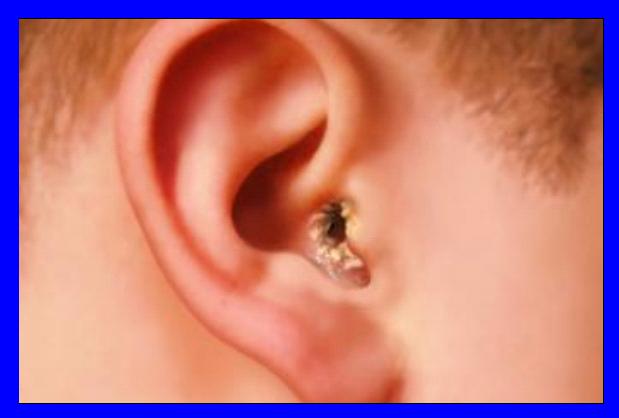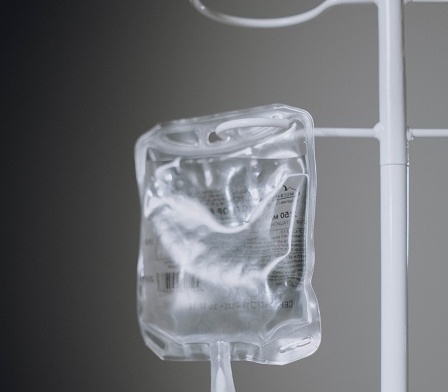
Swimmer’s ear isn’t just for swimmers. It’s only named ‘swimmer’s ear’ because swimmers tend to experience it more than other people. But the fact is that swimmer’s ear can happen to anyone; just because you’re not a swimmer, don’t expect to be immune from it. The website of the Mayo Clinic defines swimmer’s ear, simply, as an infection in the outer ear canal. (The outer ear canal is that part of the ear’s structure which runs from your eardrum to the outside of your head.) So, if you have ears, you can get swimmer’s ear, and you don’t have to swim to get it. Do you take showers or baths? Do you wash your hair? Do you ever find yourself caught in the rain or in humidity? Do you use headphones or clean your ears with cotton swabs? If you answered ‘yes’ to any of these questions (and hopefully you did, especially the shower/bath thing), then you can be prone to these infections of the outer ear canal that are also known as ‘swimmer’s ear.’
Symptoms of Swimmer’s Ear
There are a number of signs and symptoms that will alert sufferers to the fact that they are experiencing an outer ear canal infection, otherwise known as swimmer’s ear. These symptoms range in severity from mild to severe. Naturally, the more severe your swimmer’s ear symptoms, the more progressed the infection has become.
Mild symptoms
Following is a list of some of the more mild symptoms you can expect to experience from an outer ear canal infection:
- Slight redness inside the ear
- Itching inside the ear canal
- Mild discomfort (that likely will worsen when touching or pulling on your ear)
- Drainage of clear fluid
Moderate symptoms
Following is a list of symptoms you likely will experience with an outer ear canal that is worsening:
- More pronounced itching
- Discharge of pus
- More pronounced redness
- Excessive drainage of fluid from the ear
- Increasing discomfort and pain
- Decreased hearing
- Feeling of blockage or fullness in the ear canal (this is due to swelling)
Severe symptoms
The following list of symptoms is considered severe; it’s important to see your doctor (even before the symptoms get to this point):
- Severe pain in the ear that may also radiate to face, neck, and even inside the head
- Severe redness within the ear canal
- Swelling of outer ear
- Complete blockage of ear canal
- Fever
- Swelling of lymph nodes on the neck
Causes
The reasons that a swimmer’s ear infection can occur include:
- Excess moisture in the ear canal. Naturally, the reason swimmer’s ear is called swimmer’s ear is because of its likelihood to occur due to excess moisture in the ear, which swimmers experience quite often. However, showering, bathing, shampooing your hair, heavy perspiration, prolonged humidity… these are all reasons excess moisture can build up in the air. And that means they’re all reasons you can experience swimmer’s ear.
- Scratches within the ear canal. Many people clean their ears with cotton swabs or even other things such as their fingers or even such items as hair pins or the ends of pens of pencils. This is a dangerous habit to get into because it can cause small breaks in the skin within your ear canal, allowing bacteria to grow and thrive. The use of headphones has also been known to cause swimmer’s ear, especially for those who don’t clean their headphones, or for those who use them on a daily basis.
- Sensitivity. Many people experience swimmer’s ear due to the use of certain hair products they don’t realize they’re allergic to, such as certain shampoos, conditioners, or even hair sprays.
Unfortunately, swimmer’s ear can affect anyone. Fortunately, it doesn’t have to. There are a number of swimmer’s ear treatments available over-the-counter these days. Your doctor will also have treatments for your outer ear canal infection. And if you’re someone who would rather try to rid yourself of your swimmer’s ear yourself, there are even swimmer’s ear treatments that can be performed at home. Warm a few drops of extra virgin olive oil, place them in your affected ear, and then place a clean cotton ball over your ear to prevent the olive oil from draining out. Keep the cotton ball there for 10 to 20 minutes. A variation on this home remedy is to use baby oil in place of extra virgin olive oil. These are just a couple of the home remedies that have been used for centuries to treat and even prevent swimmer’s ear from occurring. If you find yourself with recurring outer ear canal infections, be sure to talk to your healthcare professional about preventive measures as well as treatment options available to you.


